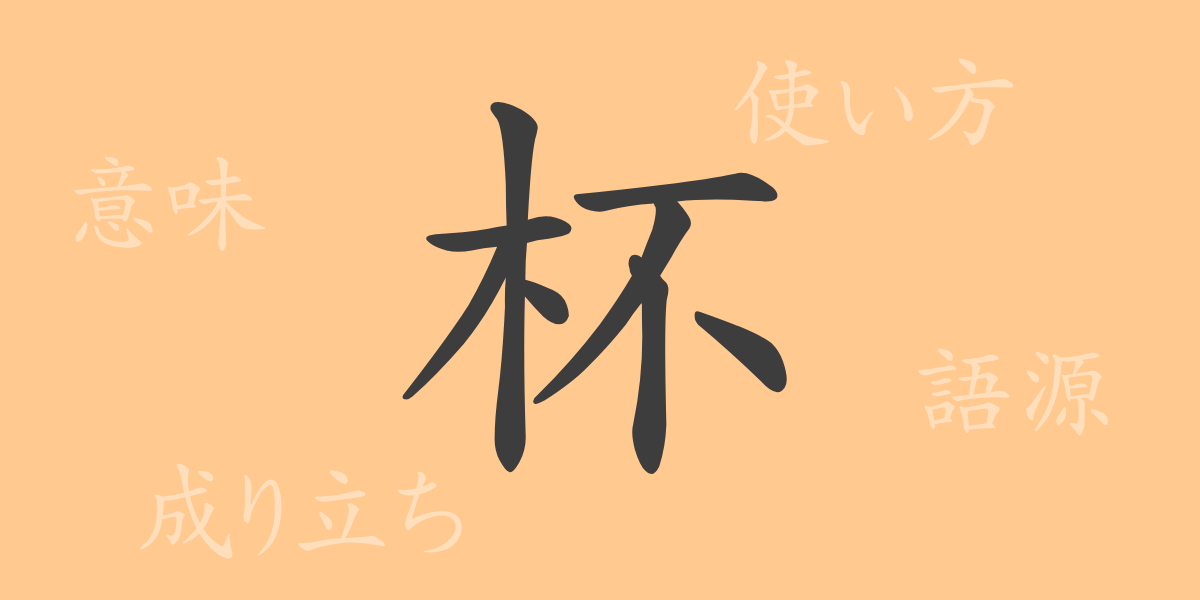Throughout Japan’s culture, the kanji characters enrich the language with their profound historical and symbolic meanings. Among them, the kanji ‘杯’ (pronounced hai) transcends its basic function as a mere vessel, reflecting the depth of Japanese history and culture. This article delves into the kanji ‘杯’, exploring its etymology, meanings, applications, and the way it has evolved within the language and culture up to the present day.
Origin of 杯 (Etymology)
The kanji ‘杯’ originated from ancient China, symbolizing a vessel specifically designed for drinking sake. Its form mimics a sake cup with two legs, emphasizing the act of pouring and holding liquids. In ancient China, such vessels were crucial in rituals and banquets, symbolizing social status. Over time, ‘杯’ was introduced to Japan, where it gained unique cultural significance.
Meaning and Usage of 杯
In modern Japanese, ‘杯’ primarily denotes a small cup used for drinking, particularly sake. It extends metaphorically to represent the act of drinking or the number of drinks (one cup, two cups). It also pertains to trophies in competitions or metaphorically to life’s milestones and significant events, illustrating its versatile usage in various contexts.
Reading, Number of Strokes, and Radical of 杯
The kanji ‘杯’ is a well-recognized character in Japan, featured in the common kanji list. Let’s examine its pronunciation, structure, and radical:
- Reading: On-reading is ‘ハイ’ (Hai), Kun-reading is ‘さかずき’ (sakazuki).
- Number of Strokes: 8 strokes.
- Radical: Wood (木部).
Phrases, Idioms, and Proverbs Involving 杯
‘杯’ appears in numerous idioms, phrases, and proverbs, each carrying unique meanings and historical backgrounds. For instance, ‘杯を交わす’ (share a cup) symbolizes deepening camaraderie through sharing drinks. ‘一杯の米’ (a cup of rice) represents minimalism, and ‘杯に瀬戸の鯛’ (a tai fish in the cup from Seto) illustrates an assembly of excellence. These expressions are widely used in daily conversations and literature, enriching the language’s imagery.
Summary on 杯
This exploration of the kanji ‘杯’ hopefully enhances your understanding of its rich meanings and cultural significance. Starting from a simple drinking vessel to a symbol of human relationships and social status, ‘杯’ has evolved significantly. Whenever you encounter ‘杯’ in daily life, recall the insights from this article and appreciate the depth of meaning it brings to the Japanese language.

























